by Simon Raffl.
Before the beginning of my 6th year at the Medical University of Vienna, I decided to do an additional internship somewhere abroad, and I eventually chose to go to Wellington, the capital city of New Zealand. I was eager to work in an English-speaking environment, and my interest has been drawn to that country for a long time as I knew a few people who had spent some time there raving about it unanimously. For that reason, I decided to give it a go and travelled literally to the other side of the world. Since everyone seemed to love New Zealand my expectations were relatively high, but at the same time I was just glad I could get away so I had no second thoughts about what would await me.
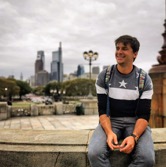
There are various places in New Zealand where one can do an elective as an overseas student, most of them are being offered by the University of Auckland and the University of Otago. I was reluctant to go to Auckland because it is quite a big city and I preferred a location of smaller size. On the other hand, the University of Otago has its main campus in Dunedin and offers placements in teaching hospitals in Dunedin, Christchurch, Invercargill and Wellington. The latter is also one of the university’s medical faculties.
Wellington seemed to be the perfect place: New Zealand consists of two main big islands, a northern and a southern one. Considering the geographical dimensions of the country, Wellington is located very central, namely on the south coast of the North Island. While experiencing a very cosy and relaxed and not too overcrowded atmosphere, you are still in the capital city with a lot of cultural programmes and events. Finally, from an academic standpoint, the tertiary hospital with its 484 beds is of a pleasant size and the affiliated university has a very good reputation.
Election procedures
The application process was elaborate, but manageable. The office for overseas elective students requires proof of satisfactory standards in spoken and written English, malpractice and personal health insurance, a criminal record as well as a student health record which needs to include the TB status (Mantoux test or Chest X-ray) and the blood test result for ANTI-HBs, Measles antibody, Mumps antibody, Rubella antibody and Varicella-Zoster antibody.
I got my vaccination record by the National Italian health insurance company, but one can also get it at the outpatient Department for Vaccinations, Travel and Tropical Medicine of the Medical University of Vienna.
Regarding language proof, I handed in my TOEFL results, and what concerns the insurance, the certificate from the Austrian Student Association (ÖH) was sufficient. All these requirements are also listed online on the homepage of the university.
Electives can be done anytime during the year, with some exceptions of the local students being prioritised, for example in December and January. One can do a maximum of two months of elective with a maximum of two different specialties, e.g. it is possible to do one month in Cardiology and one month in Surgery, or two full months in Cardiology without switching to another specialty. The application has to be submitted via email one year in advance, in the months of March to May. There is also a tuition fee of NZ$1250 (about 730€), indifferent if you are serving four or eight weeks. I applied for Anaesthesiology from February to March for two months and luckily, I got the placement.
Organisation, housing and arrival
However, there were still a few organisational issues to handle: the visa, the flight, and the accommodation.
The first challenge turned out to be very simple and straightforward, because most of the European countries are Visa Waiver countries (and so are Austria and Italy where I am from), which means their citizens are allowed to travel to and stay in New Zealand without a Visa for up to three months; all it takes is a valid passport. If one plans to stay longer than three months, it is required to get a proper Visa. That information can be found online on the New Zealand immigration web page listed very precisely.
As far as the travel preparation is concerned, I booked the flight only two weeks before leaving as unfortunately there had been some issues with my confirmation of the placement and I got the safe place just a couple of weeks before it was supposed to start. However, I still managed to get a good price as the prices booking in advance do not differ much from it. I looked it up on a German flight comparing platform and payed 1100€ for a round trip from Munich to Wellington and back. The flight duration is around 38 hours and there have been at least two transfers. It is important to have the return flight booked in order to validate the free visa waiver, whilst otherwise the airport security in New Zealand won’t know whether you are going to stay less than three months hence may refuse the entry.
The trickiest and most nerve-wrecking task was to find an accommodation. Wellington is a city with a huge housing problem as there are lots of students and seasonal workers, and many people who own property just as vacation residence. There are many websites offering accommodation for students, but the ones for a reasonable price are usually located in the outskirts. The worst problem is, in fact, that rooms are only rented on a lease for periods longer than six months. As an exchange student, the possible options are basically reduced to the following: It is either possible to look for a host family, search for a place in a student hall or try to find an affordable room on AirBnB. I managed to get a room in a student hall, which unfortunately was only available for two weeks because the new semester started then and local students were prioritized. I figured out that it would be easier to find something permanent once I was in Wellington so I stayed in the student hall for the beginning, and in the meantime, I was looking for new places to move in. Unfortunately, I did not find anything and was about to get desperate, until I spoke to a doctor in the hospital who told me that she was going to ask around if someone had a place to stay, and she ended up getting 16 emails from co-workers who offered to shelter me. Eventually, I could stay at one of the anaesthesiology doctors’ house just a two-minute walk from the hospital, for free. Therefore, I recommend asking your mentor beforehand if they have any information or tips regarding housing. I landed in Wellington with a 30 kg suitcase, 8 kg hand luggage and a small backpack, which was more than sufficient. Since I was going to be there from February to March, having summer and beginning of autumn on the southern hemisphere, I did not have to bring lots of really warm clothes with me. Most of the luggage space was loaded by hiking and camping equipment because I was planning to travel after the elective would be over. The temperature in that period was between 18 and 26 degrees Celsius. Wellington, however, is – with good reason – also called “Windy City”, and if travelling the South Island too, it is highly recommended to bring sweaters, a rain coat and some hiking boots, because the weather can change swiftly, and on the southern island it is even more changeable. It is important not to forget a travel adapter; in New Zealand the Type I plugs are in use.
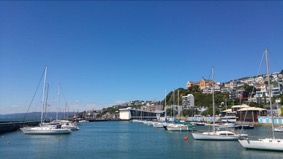
There is a shuttle bus from the airport to the city centre, which costs around NZ$10, otherwise I suggest to call an Uber. It is not hard to find one’s way in Wellington, but in the first days it is not unusual to be without mobile web access, so I recommend downloading an offline city map prior to arrival. Speaking of mobile web access, various telecommunication companies have SIM card offers for visitors. I decided to buy one from Vodafone, and it costs around NZ$50 for 10 Gigabytes of Internet. The data volume was not bound to a calendar month but to the speed of how someone consumes it, and I was able to get by for the two months I was there.
I arrived in Wellington three days prior to the start date of my internship, just to make sure to know how to get to the hospital and to have a few days to overcome the jetlag. Although only served by busses, the public transport is well connected. Unfortunately, there are no student tickets available for overseas students (there are only student tickets for registered “long term students”) which is why it is best to buy a “Snapper”-Card, a re-chargeable bus card. It can be bought online or at the local retailers. With the Snapper-card, a bus ride from the city centre to the hospital costs around NZ$2.50.
The hospital and daily life
The hospital is located a bit outside the main city centre in Riddiford Street. Depending on where the accommodation is, it is easily reachable by foot or by bike. The hospital is a very modern building and with its 484 beds not comparable with the General Hospital in Vienna, but for New Zealand rather big and it has got all the main specialties covered.
My first day at the hospital started at 9.30 a.m. I first met the coordinator for overseas students. She gave me, and two other students who started on the same date, the badges and some general information regarding the elective. Then we were shown around the hospital, which was very clean and well equipped, and afterwards taken to the departments where our internships would take place. There, I met my supervisor for the next eight weeks, who showed me the department, introduced me to some people and then took me to a theatre where I could start assisting the anaesthesiologists in charge.
During my elective I started to work around 8 a.m., but the time I could leave was dependent on the doctor I was assigned to. Usually it was not later than 3 p.m. and most doctors would tell me to leave at 1 p.m. to enjoy the rest of the day. They are well aware that someone does not only come to New Zealand for work, but also for reasons to see as much of the country as possible. They were always very keen on giving tips on where to go and what to see. It was never a problem if I wanted to take a couple of days off to go on a trip. Before the start of a new week, my supervisor would always ask me what area of anaesthesiology I wanted to see, and that’s how he assigned me to a different doctor every day. By doing so, I was able to assist and learn about anaesthesia in general surgery, plastic surgery, thoracic surgery, vascular surgery, paediatric surgery, neurosurgery, bariatric surgery, obstetrics and I got to spend two days in the ICU too.
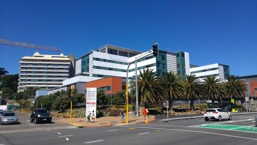
At this point, it is hard to say which area I liked most, since the main focus was different in each of them. Regarding overall management, I would say that thoracic surgery was the most challenging one. The internship was structured very differently from what students from central Europe are used to, mainly because it is – like in most
English-speaking countries – less practical and more focused on “learning by watching”. I had no specific duties, but I always needed to perform the narcosis induction, and depending on the attending doctor, I was also made to intubate or put in lines. I always attended the preoperative talk with the patients to explain the consent form, and after the surgeries, go to the recovery room with the doctor. Between the intubation and extubation, I sometimes administered medications, and the doctor in charge would share the theoretical aspect of Anaesthesiology in most cases which was truly helpful. All the clinicians were always very motivated to teach and explain, and I was constantly encouraged to ask questions. Even the surgeons were all very kind and friendly, and if some surgeries took longer and I had no more Anaesthesiology-related questions, they would explain the surgery and its techniques.
As for the language, the New Zealand accent is not too strong and well understandable, so that hasn’t been a problem at all. If there occurred some words I did not quite fully grasp the meaning of, everyone was understanding and explained it to me.
One of the things I enjoyed most was the fact that there is an extremely flat hierarchy, like it was not existent at all. Doctors as well as nurses and students, everyone was very nice and respectful, without any exception, and the staff would interact and chat a lot during the procedures. They were also really interested in the background of the overseas students so there was always a new story to talk about. So, I felt much more welcome and involved compared to what I had been used to in Austria or Germany.
What surprised me most in a very positive way, was at the beginning of my elective the environmental responsibility everyone complied to. It was something observable in the daily routine, in the whole country, but it made me even more delighted to see environmental protection happening in a hospital. Doctors tried to avoid volatiles as anaesthetic as much as possible because of them being greenhouse gases; they would precisely separate the waste of wrapping material (e.g. for syringes or medication); and in the whole hospital there was almost no paper used for documentation, because nearly everything is done electronically.
Another very positive observation, not only in the hospital, but concerning the whole country, was the low rate of smokers and the fact that if people smoked, they mostly used E-cigarettes. In New Zealand, a pack of normal cigarettes costs about NZ$38, which is about 23€, and smoking in general is seen as a much bigger no-go by society than it is in Europe.
Although no one ever went on a smoking break, I could always go on coffee breaks, and the doctors usually offered me a coffee break. There were also several options for lunch: One could bring it from home and eat it in the kitchen of the department, go to the very good cafeteria at the entrance of the hospital or to the big canteen. The tuition fee which students have to pay does not cover the lunch. Since New Zealand is generally rather expensive, I would choose between bringing it from home, eating at the cafeteria or sometimes not eating at all whenever I could go home right after lunchtime.
Every now and then, additionally to the time in the operating theatre there were some interesting presentations of new studies or case reports, and once a month an interactive simulation training of emergency cases was conducted.
By the end of my internship, I prepared some paperwork to be signed off which was no problem at all because my supervisor drew his signatures without any big discussions. The only thing the hospital did not possess was a hospital stamp, so if there are sheets that need to be stamped, it needs to be discussed with the home university. There usually are solutions for circumstances like these as well.
Leisure time and activities
I used to spend most of my free time exploring Wellington and its surroundings. Considering its population of 420,000 people Wellington has a lot to offer. It has for good reasons once been described as the “coolest little capital in the world”. Architecture-wise it is rather inhomogeneous, offering lots of different styles from the last century.
I recommend looking out for the St Mary of the Angels Church, the Museum of Wellington City & Sea, the Te Ngākau Civic Square, the Parliament (commonly referred to as the “Beehive”), the Railway Station and the area around the Whairepo Lagoon. Extremely interesting and a must do in Wellington is a visit at the “Te Papa Tongarewa”, the national museum of New Zealand, with its national art gallery and a massive archaeozoological and historical exhibition.
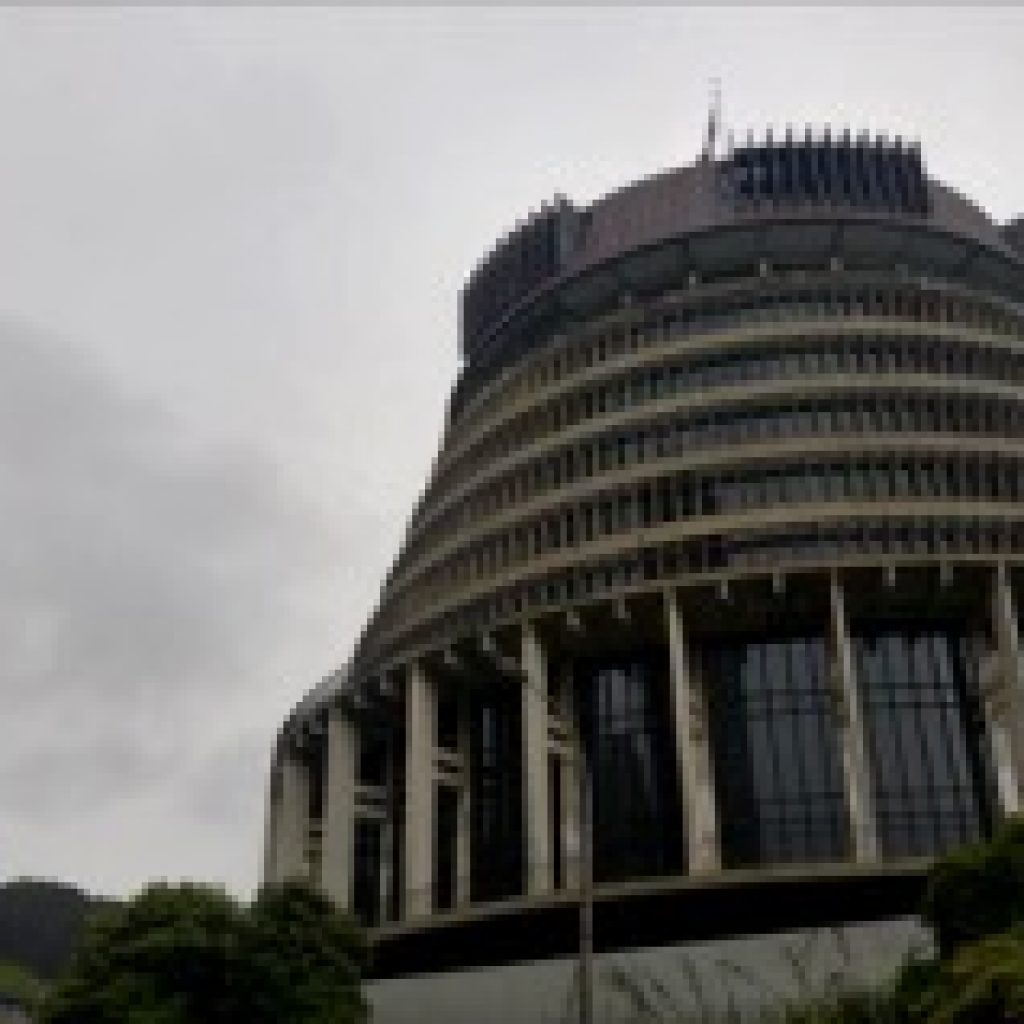
If one want to go for a stroll in the afternoon, I highly recommend a stroll by the waterfront; there are a lot of nice cafes and restaurants there. Speaking of cafes, one needs to go to Neo Café, it definitely was one of the best culinary experiences in my life; and speaking of restaurants, a whole lot of exquisite ones can be found in Cuba Street, the most prominent street in the centre of the capital. If the weather is hot, I recommend going to swim by Oriental Bay, a small but very nice beach near the city centre. To have a view of Wellington from above, I suggest hiking up to Mount Victoria – it is located just next to the city and it takes about 40 minutes by foot to get on top of it; there are numerous mountain bike and walking tracks leading up to the summit. A beautiful alternative or addition to Mount Victoria is to use the symbol of Wellington, namely the Wellington Cable Car, to get to the top of Kelburn, a suburb which sits on the hills overlooking the central city.
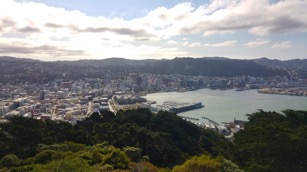
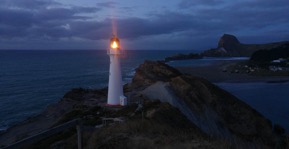
Being on the other side of the world and getting thrown into an environment I did not know at all, I really hoped to get to know new people and make new friends. The best in New Zealand is that it is the easiest thing of all. The local people are so incredibly friendly and welcoming that it is extremely hard not to strike up new friendships. For those who are medical students, I suggest to have a look into the Facebook group “WHPSA – Wellington Health Professional Students‘ Association”, which is basically the group for all local medical students. There are posted a lot of events and one is more than welcome to join as an overseas student.
Travelling
As I mentioned before, after my internship I travelled the islands for three weeks. To give some tips for New Zealand in general, there would be far more recommendations than this report could ever carry, so there are just a few brief things: I did not want to travel around alone, so I ended up doing the trip with someone whom I texted from a Facebook group for backpackers. There are a couple of these groups, and there are lots of people in search for travel buddies, so it is very easy to find someone to “enjoy the ride with”. We rented a campervan to drive around (an International driver’s licence is mandatory), as there is an abundance of free camping sites in the whole country. One can spot them by using the App “CamperMate”. There are so many places worth seeing that I would recommend stopping by at a PeterPans Adventure travel office (there are a couple of them in New Zealand). The employees are extremely friendly and they create an itinerary for free for the available time, while they still include time to be spontaneous during the trip. They also book tours, activities and transport if needed (like kayaking, skydiving, ferries etc.).
The two main islands of New Zealand are quite different from each other. Generally, the northern one offers an abundance of extremely different looking sceneries, from extended beaches and hiking tracks leading up to volcanoes, long and remote coastal roads and hot springs to Auckland, the largest city in New Zealand.
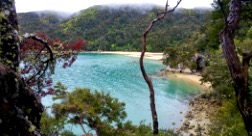
The South Island, on the other hand, is a lot rawer, wilder and more untouched than its counterpart. It offers many former small gold mining towns by the coast, turquoise lakes, the highest mountain of the country (Aoraki/Mount Cook) and the so called “biggest playground of the world”, namely the city Queenstown, where one can do all sorts of adrenaline-related activities this planet has to offer (bungee-jumping, skydiving and much more). Depending on one’s availability, I would plan to spend at least 10 days on the North Island and 20 days on the South Island. If I had to choose between these two, I would rather visit the southern island, which, in my opinion is more original. Its wilderness is simply breath-taking.
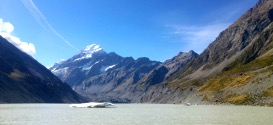
I often get asked what the best part of my journey to New Zealand was, and there are a lot of things to pick from: The outdoor possibilities are endless and the internship was not only interesting but also instructive, the nature is stunning and the towns and cities are incredibly charming.
However, this is nothing compared to the “Kiwis” (the colloquial term for New Zealanders): They are extremely kind, authentically friendly and so welcoming, which was proven by the fact that I could stay at someone’s house for free, a person who had never even seen me before. I had barely set foot on the country and I already felt at home, and just typing these words gives me a heart-warming sense of nostalgia and the desire to visit the country again.
A quick overview of the expenditures:
| Tuition fee | 730€ |
| English certificate, criminal record, vaccinations, other documents | 350€ |
| Flight (both ways) | 1.100€ |
| Public transport | 80€/month |
| Telecommunication services | 30€/month |
| Accommodation | 600€/month (the average price back when I was looking for a room) |
| Groceries | 300€/month |
| Leisure activities (eating out, entrance tickets etc.) | 200€(month |
| Optional: Travelling around by car/campervan | 600€/week |
Interesting Websites
- Requirements for the elective and additional information: Medical electives for final-year medical students from overseas.
- Vaccinations: Department for Vaccinations, Travel and Tropical Medicine of the Medical University of Vienna
- TOEFL or Cambridge Assessment: Language certificates both of which are recognized in most parts of the world.
- New Zealand Immigration: Travel information and questions regarding the visa, visit.
- Flight comparison website: The flight can be booked on any travel price comparing service.
- Transport in New Zealand: Information on how and where to buy the bus card in Wellington.
- Find people: To connect with local students and be informed about their upcoming events, give this webpage or the respective Facebook group a shot.
- Helpful tips and useful travel itineraries: What to do, where to go and what to see will tell you the employees in the offices of this company, one of which is located in Wellington.
Contact
If you have any questions about Simon Raffl’s elective, or if you have any questions to Simon Raffl personally, please contact the GI-Team. Write an e-mail to media@goinginternational.org – we would be pleased to help you.
Do you have questions regarding the topics working & postgraduate training or finding jobs & career, write an e-mail to Mag. Seitz: office@goinginternational.org

Citation:
Raffl, Simon: Two-month elective in the field of Anaesthesiology in Wellington, New Zealand (In: Polak, G. [ed.]: GI-Mail 05/20, ISSN: 2312-0827 Going International, Vienna 2020)
Here you can download this publication.
Published in GI-Mail 05/2020 (English edition) and 11/2020 (German edition).
- Do you already know our monthly newsletter GI-Mail with useful tips on postgraduate courses?
Sign up here. - Are you looking for vacancies or new career challenges? Here you will find the latest vacancies and job offers.
- Are you interested in up to date postgraduate courses and CME? In our education database »medicine & health« you will find new education events from over 2300 organizers.

One Comment
I really like this site. It has unique and interesting articles.